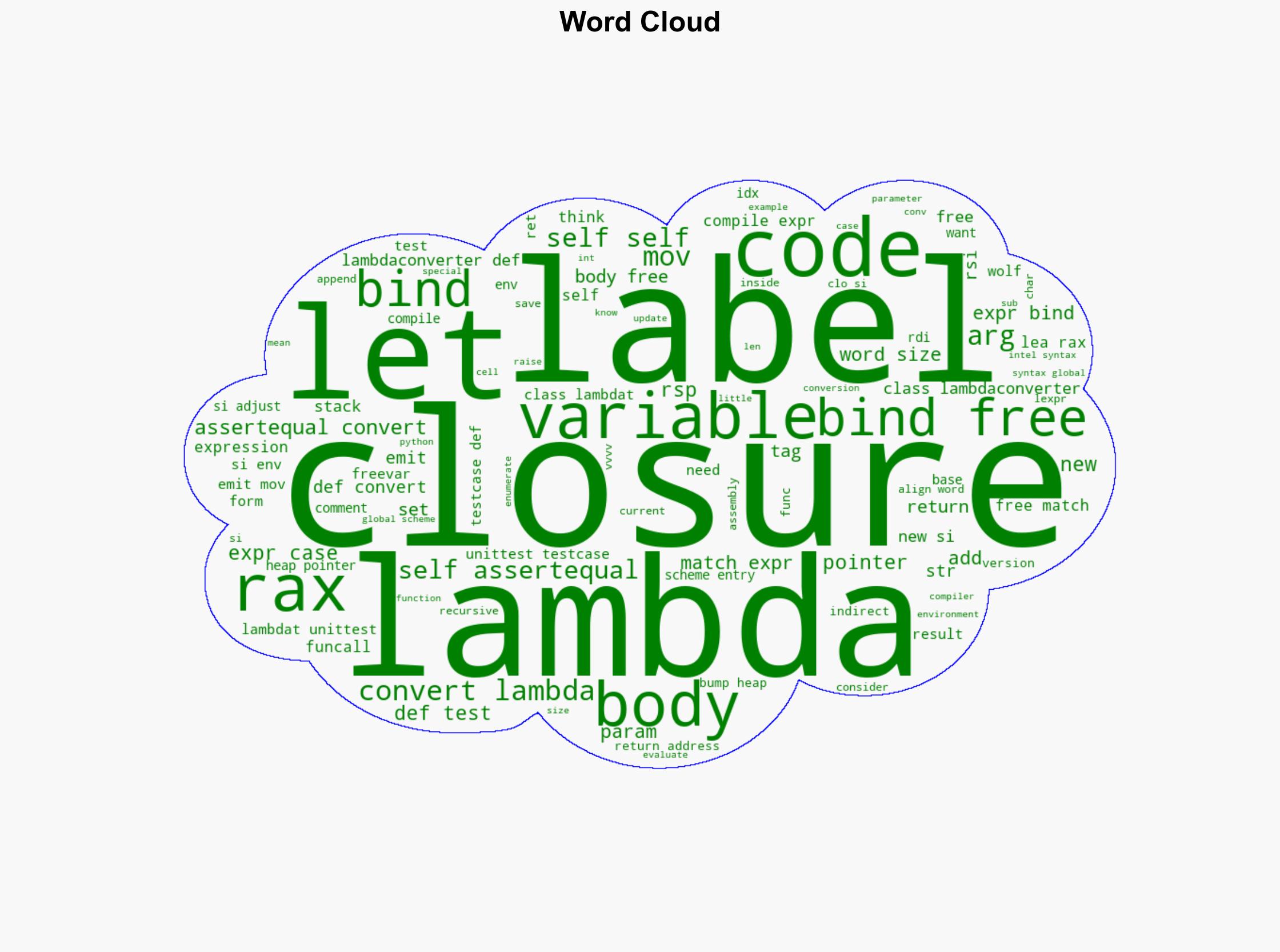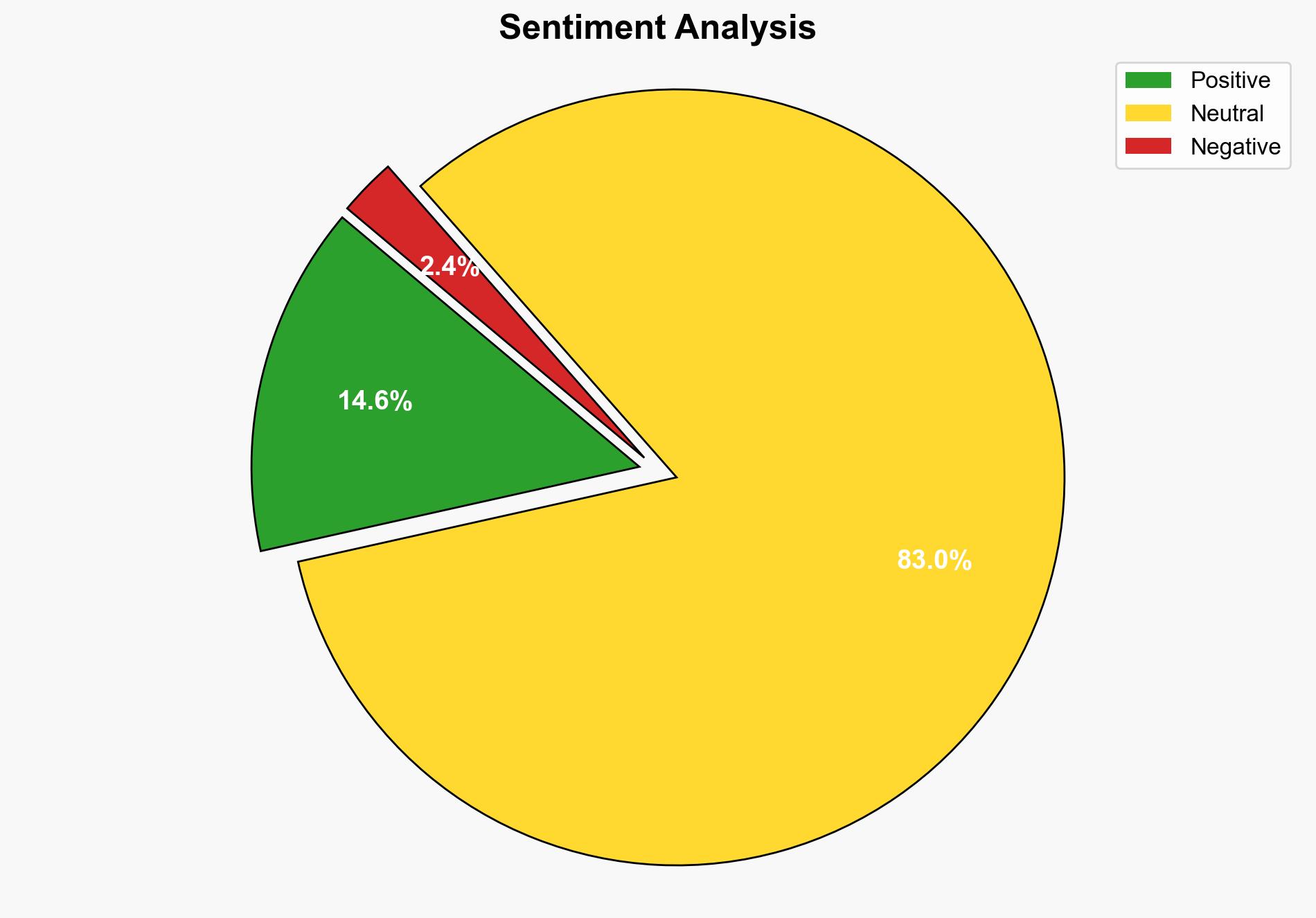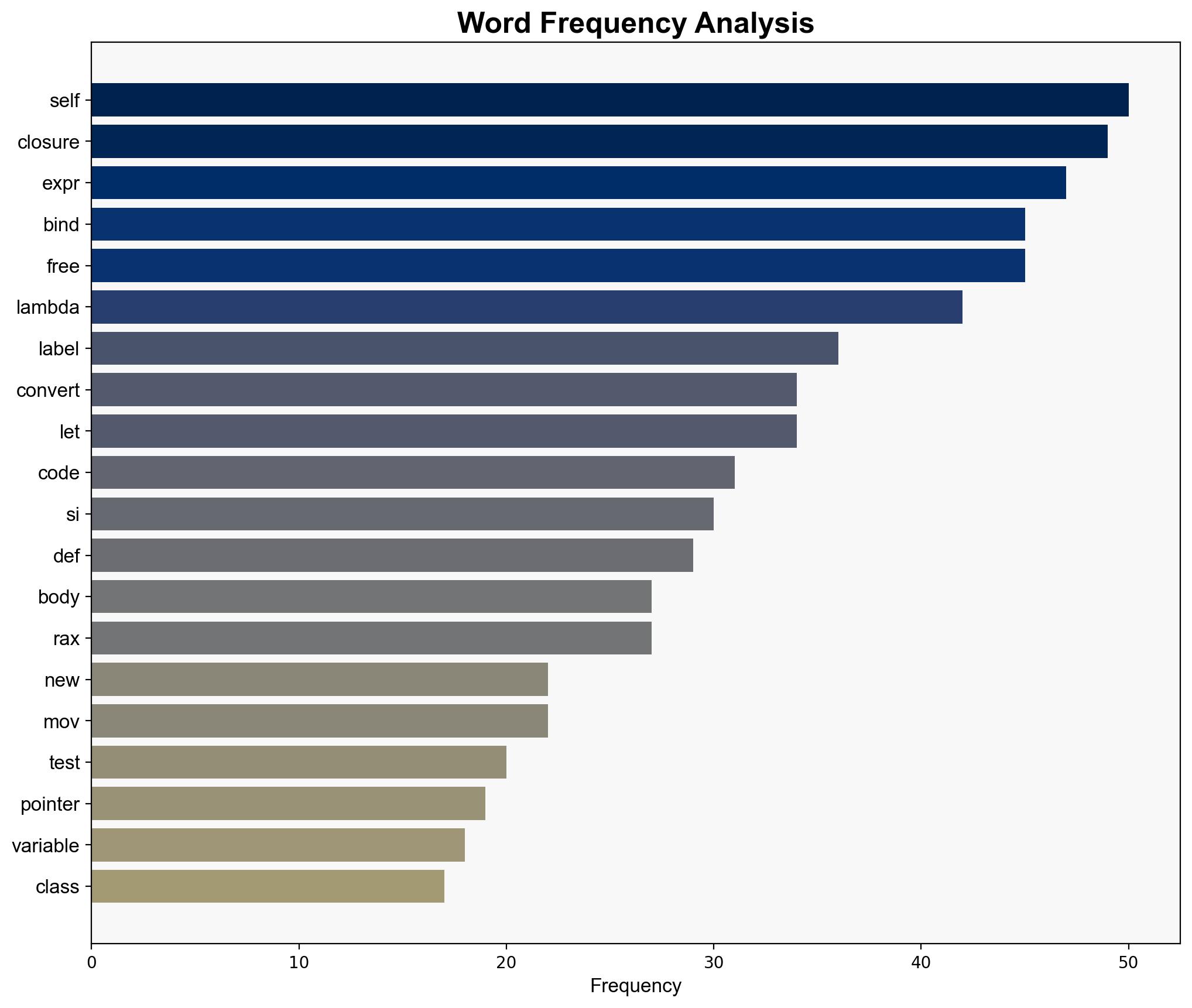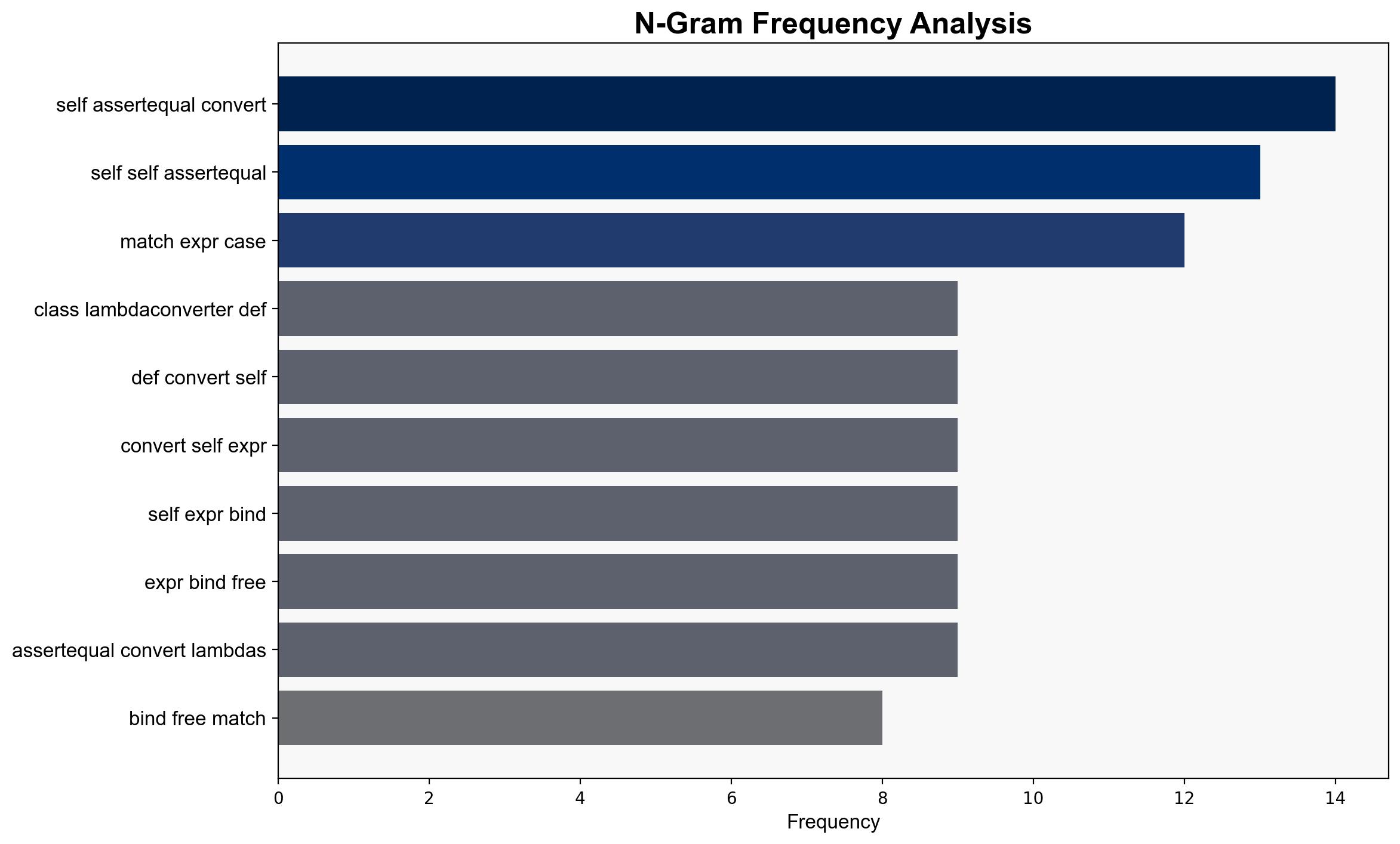Compiling a Lisp Lambda Lifting – Bernsteinbear.com
Published on: 2025-08-10
Intelligence Report: Compiling a Lisp Lambda Lifting – Bernsteinbear.com
1. BLUF (Bottom Line Up Front)
The analysis of the source text suggests two primary hypotheses regarding the intent and focus of the article on Lisp lambda lifting. The most supported hypothesis is that the article aims to provide a technical tutorial on implementing lambda lifting in Python, which could be beneficial for programmers looking to understand or apply this concept in their projects. Confidence level: Moderate. It is recommended to further explore the practical applications and potential implications of this tutorial in software development and cybersecurity.
2. Competing Hypotheses
1. **Hypothesis A**: The article is a technical tutorial designed to educate readers on implementing lambda lifting in Python, focusing on practical coding techniques and examples.
2. **Hypothesis B**: The article is an academic exploration of lambda lifting concepts, intended to contribute to theoretical discussions in computer science without a primary focus on practical application.
Using structured analytic techniques such as Analysis of Competing Hypotheses (ACH), Hypothesis A is better supported. The presence of code snippets, tests, and practical examples indicates a focus on hands-on learning, which aligns with the characteristics of a tutorial.
3. Key Assumptions and Red Flags
– **Assumptions**: It is assumed that the reader has a basic understanding of Lisp and Python programming languages. The tutorial assumes that lambda lifting is a relevant topic for the audience.
– **Red Flags**: The lack of explicit context or introduction in the snippet may lead to misinterpretation of the article’s purpose. The absence of a clear conclusion or summary in the provided text could indicate incomplete information.
4. Implications and Strategic Risks
The tutorial’s focus on lambda lifting in Python could have implications for software development practices, potentially influencing how developers approach functional programming concepts. There is a risk that without proper context or understanding, readers may misapply the techniques, leading to inefficient or insecure code. Additionally, the dissemination of this knowledge could impact cybersecurity if lambda lifting is used in malicious software development.
5. Recommendations and Outlook
- Encourage further exploration of lambda lifting’s practical applications in software development to enhance understanding and implementation.
- Monitor discussions and developments in programming communities to identify emerging trends or potential misuse of lambda lifting techniques.
- Scenario-based projections:
- Best Case: Enhanced programming skills and secure software development practices.
- Worst Case: Misapplication leading to security vulnerabilities in software.
- Most Likely: Increased interest and experimentation with lambda lifting in programming projects.
6. Key Individuals and Entities
– No specific individuals are mentioned in the provided text snippet.
7. Thematic Tags
software development, programming education, cybersecurity, functional programming





